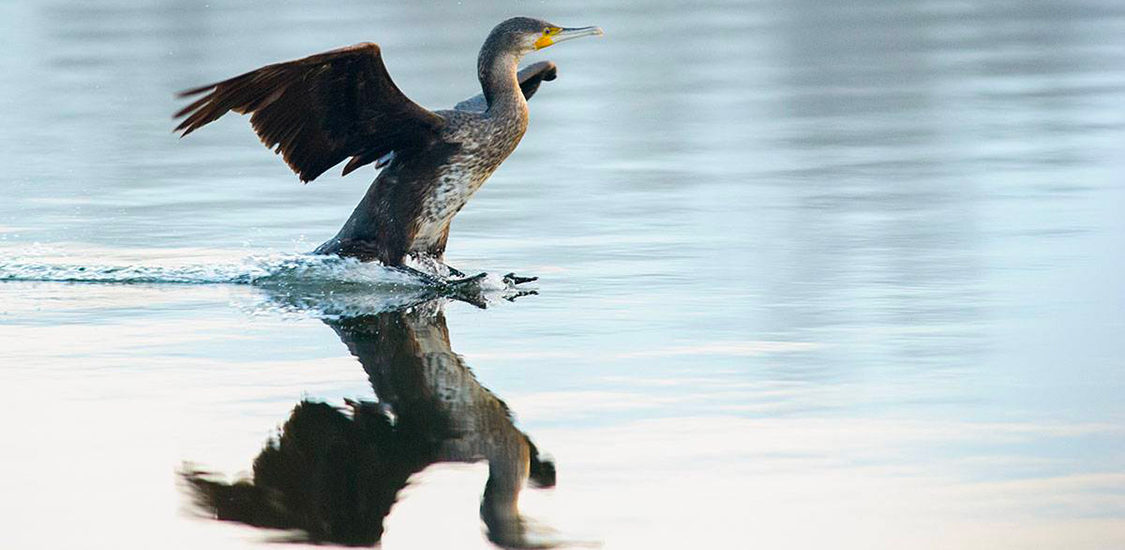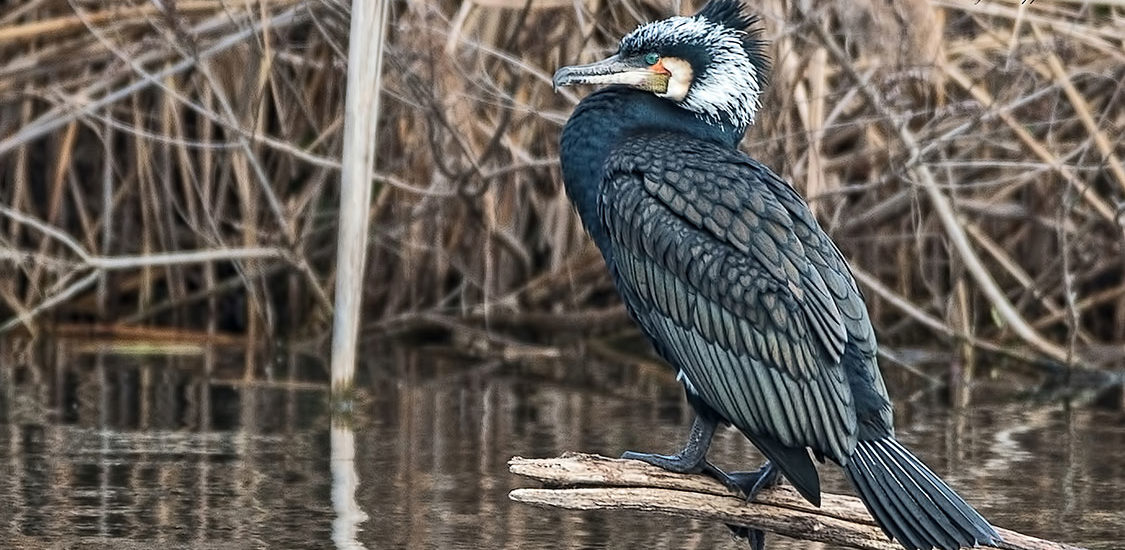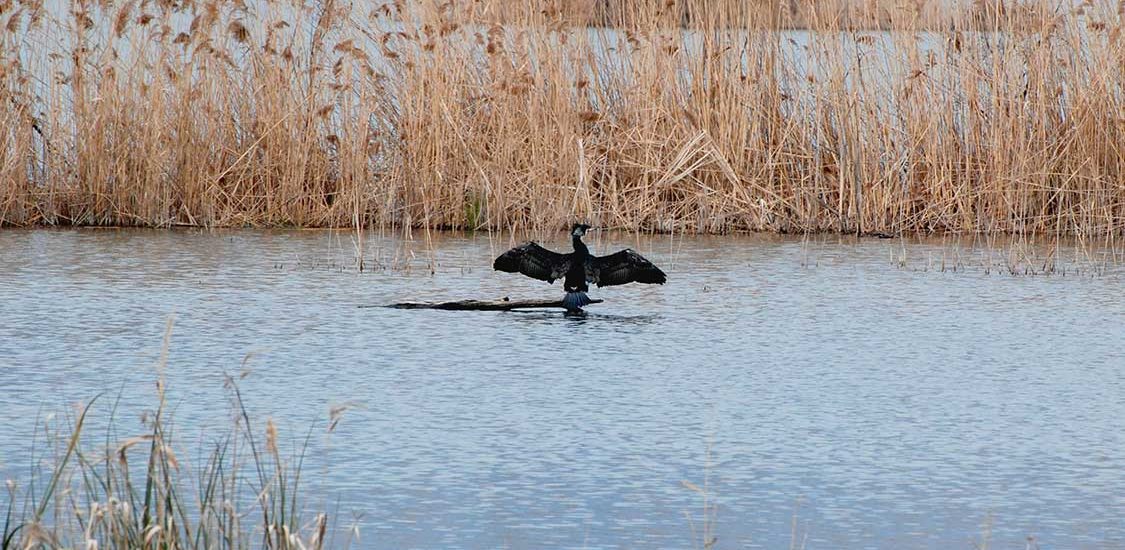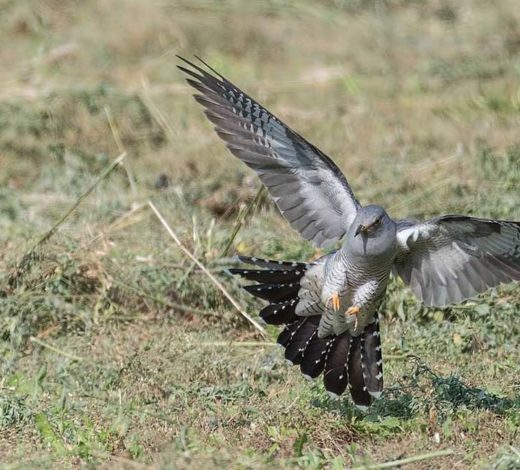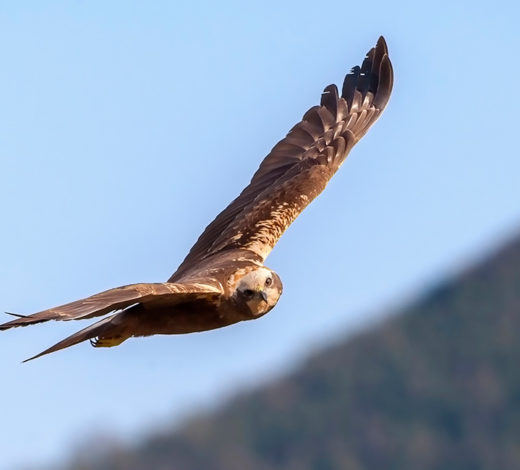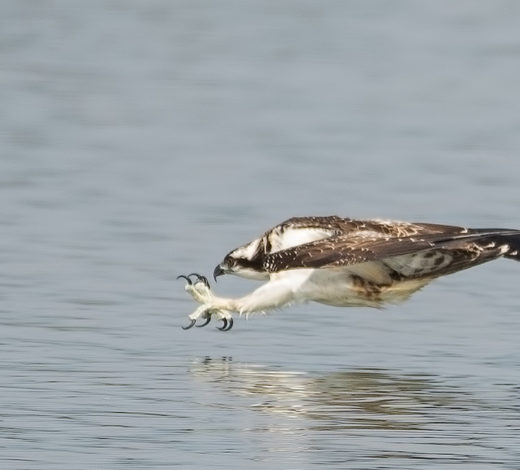Great Cormorant
(Phalacrocorax carbo)
These are able fishing birds capable of following the fish underwater. Returning to the surface, they quickly turn the fish and swallow it head first. Since their feathers are not waterproof, they often ‘stretch out’ to dry as they rest after a dive. They open their wings and remain still until they dry.
Description
Adult cormorants are entirely black with white cheeks and throat, while the young have a lighter coloured lower body and plumage tending to dark brown. In flight, they keep their necks completely extended and bat their wings rather quickly. Wingspan: up to 160 cm. Length: 90 cm.
Habitat
They frequent lakes, open marshes, and seashores. Cormorants use Lake Iseo as a fishing area and the trees in the Reserve both for nest-building and to rest at night. However, these birds can sometimes be seen feeding in the waters of the ‘Lame’ and resting in trees, even during the day.
Observation in the Torbiera Reserve
Two and six individuals were observed to the south of Lake Iseo respectively in December 1985 and January 1987 (Brichetti and Cambi 1990), but were considered anomalies. The species was later observed with increasing frequency, both in winter and summer. The presence of these birds has now strengthened, with the creation of a large nesting colony. They mainly occupy the central area of the Reserve and can easily be seen even at a distance given their size.
